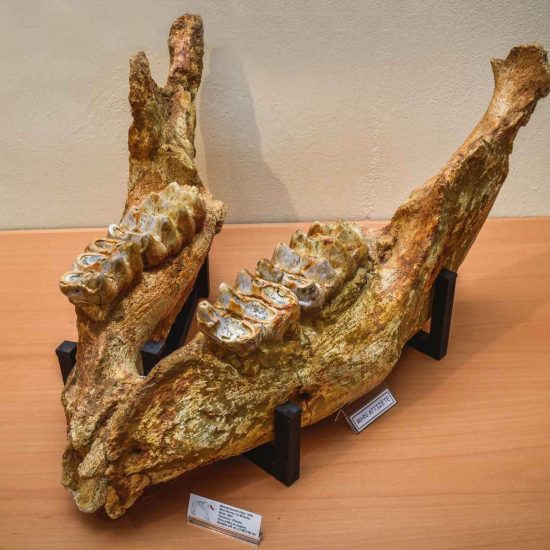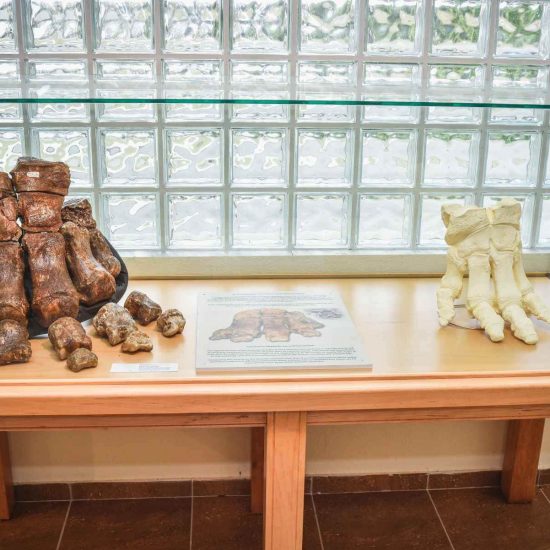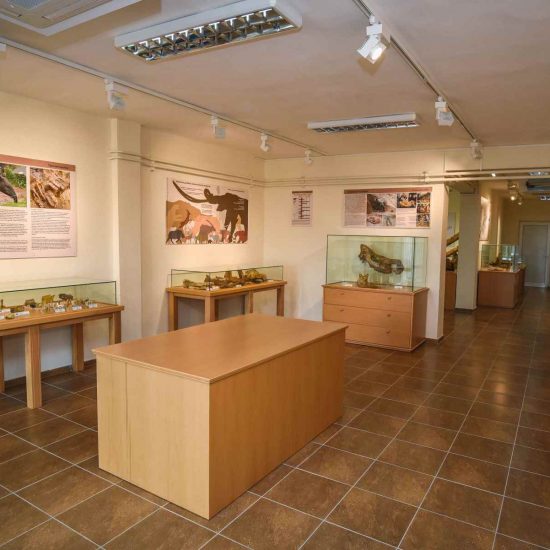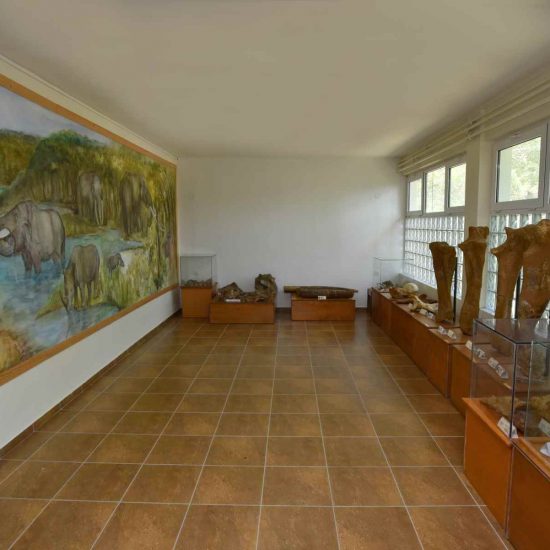Museum of Natural History (Milia)
per person
In a newly renovated building, visitors can admire the largest tusks in the world – according to Guinness World Records (2011), on a paleontological exhibition of international standards. The fossils as well as many paleontological findings came to light after the extensive excavations since 1990, by Evangelia Tsoukala, professor of Paleontology at AUTh. Fossilized bones of elephants, felines, rhinos, turtles, small horses, tapirs, bears, a homotherium, gazelles, wild boars but also of the big cattle that was named internationally from the name of Grevena, Grevenovous the archaic, were found, protected for millions of years, in the hospitable subsoil of Grevena (Ampelia, Milia1-10,Priporos etc.). The exhibition was enriched by various collections -donations (mainly the one belonged to the collector/researcher N. Bacharidis) of minerals and rocks, invertebrates of the rich palaeontium of Grevena aged 30 million years (among them stand out the bivalves, the gastropods, the sea urchins, the corals, a shark tooth etc.) that compose the paleontological profile of the area. The most outstanding finding is the Mastodontas of Milia (as it was named in honor), a giant male herbivore ancestor of elephants, with tusks length 5,02m, height 3,5m and 8,5 tons of weight, that lived in the territory from the Pliocene period, i.e. before 3,5 million years. An even smaller mastodon, 2,5m high, was also found there.
All these are presented to the public with the scientific care of the Department of Geology of the Aristotle University of Thessaloniki in collaboration with a team of Dutch experts led by the paleontologist Dick Mol and suddenly put Milia, a small village of Grevena, on the paleontological world map for scientists as well as for the fans of natural history.
The collection is open to the public daily and by appointment, conducting detailed guided tours for groups and schools and is friendly to foreign visitors due to the many informative panels in English.
Writer: Κωνσταντινιά Αντωνίου
Source: Vlachos, E.; Tsoukala, E.; Crégut-Bonnoure, E.; Guérin, C.; Mol, D. The Paradise Lost of Milia (Grevena, Greece; Late Pliocene, Early Villafranchian, MN15/MN16a): Faunal Composition and Diversity. Quaternary 2018, 1, 13. https://doi.org/10.3390/quat1020013
Accessibility: Accessible for people with reduced mobility.






